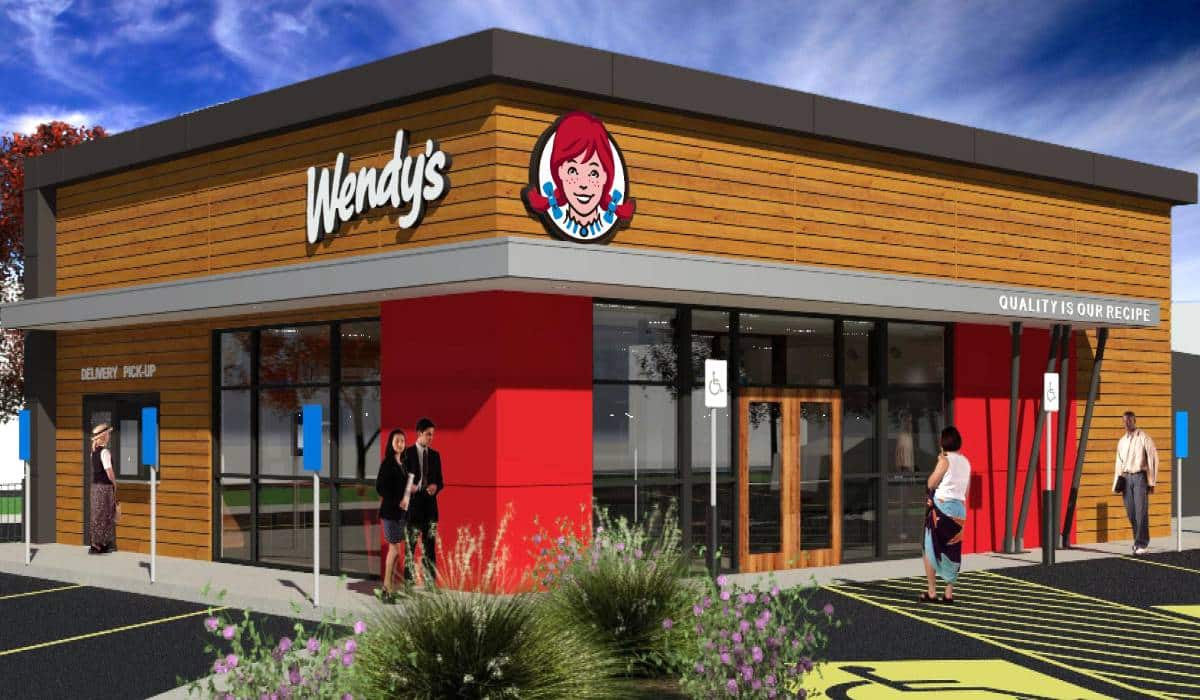Wendy’s CEO Todd Penegor “firmly believes” global unit expansion is the unlock for accelerating company growth, and the chain is putting its money where its mouth is.
The fast-food chain revealed Wednesday a new “Pacesetter” development program in the U.S. and Canada. It will double the incentive offered in the previous Groundbreaker program while increasing the royalty rate to 5 percent. The incentive is expected to cut payback for a new build to just over two years.
The first restaurant to open under Pacesetter will likely be in 2025, and a “really meaningful impact” should start in 2026 and beyond.
“We are willing to make the respective growth investment,” CFO Gunther Plosch said Wednesday during Wendy’s Q4 and full-year earnings call. “It creates very good return for franchisees. And to be clear, it also creates good financial returns for us and for our shareholders. So will we be creative on incentives on a go-forward basis? Most likely. But that’s what we are rolling out currently.”
The news comes about a month-and-a-half after Wendy’s chairman Nelson Peltz revealed he wouldn’t try to buy the brand. In conjunction with that announcement, the brand unveiled an organizational restructure that envisions a more global mindset around unit growth, digital activation, and technology, instead of siloing the U.S. and international divisions. As part of the redesign, Kurt Kane, U.S. president and chief commercial officer, was let go and his positions eliminated
Penegor said Wendy’s foundation was strong before launching the Pacesetter program. The chain entered 2023 with a significant portion of its pipeline locked under Groundbreaker development incentives, in addition to more than 300 franchise candidates in its recruiting pipeline, a build-to-suit program that’s expected to ramp up in 2024, and “compelling” development incentives across international markets.
Wendy’s is also equipped with a new global design standard that should build higher AUV and reduce construction costs. Announced in August, the prototype features a delivery pickup window, dedicated mobile order pickup, a reimagined galley-style kitchen, modernized technology, and efficient building elements, like HVAC and lighting.
Digital sales, which are expected to lower labor costs and add profitability, will play a lead role in these new stores. In 2022, the channel earned $1.3 billion on a global basis and mixed 10-plus percent in Q4. In the U.S., digital results were driven by growth across delivery and mobile ordering. The loyalty program reached 29 million members at the end of 2022, an almost 40 percent increase year-over-year. Internationally, digital mixed 17 percent thanks to the recent launch of loyalty in Canada.
Wendy’s projects high-single-digit global digital sales growth in 2023, reaching roughly $1.5 billion. The channel should rise to more than $2 billion in 2025, representing a sales mix in the mid-teens.
READ MORE:
Billionaire Nelson Peltz Won’t Pursue Wendy’s Acquisition
Wendy’s Uses Innovation to Jolt Breakfast Sales
How Wendy’s is Navigating an Inflationary Puzzle
Keep in mind, the company is emphasizing traditional restaurant growth and pivoting away from ghost kitchens. Wendy’s signed a deal in 2021 to open 700 REEF delivery outlets by 2025. However, that was slimmed to 100 to 150, with most of those coming in the U.K. and Canada. In the U.S., these ghost locations have underperformed at $500,000 and lower in AUV.
“We believe our efforts are better spent driving more access to the Wendy’s brand through our Global Next Gen design,” Penegor said.
Wendy’s U.S. same-store sales lifted 5.9 percent in Q4, lapping growth of 6.1 percent in the year-ago period. For the full year, comps rose 3.9 percent, on top of 9.2 percent in 2021. Domestic sales were fueled by the growing breakfast daypart, which peaked at over $3,000 per restaurant per week in Q4.
Internationally, same-store sales increased 9.9 percent, after rising 18.1 percent in the prior year. In 2022, comps grew 12.4 percent, lapping a 17.6 percent uptick.
The chain opened a net of 146 restaurants last year, up from 121 in 2021. That includes 56 in the U.S. and 90 internationally. Wendy’s finished 2022 with 7,095 restaurants systemwide—5,994 in the U.S. and 1,101 internationally.
Penegor said growth strategies (i.e. new prototype, incentives, fewer delivery kitchens) alongside stronger same-store sales and digital acceleration will drive franchisees to invest more. Last year, net restaurant expansion was about 2.1 percent. In 2023 and 2024, annual net unit growth is expected to be 2 to 3 percent, with 2024 seeing the higher end of that range. As more growth-mind operators enter the system, the rate is projected to rise to 3 to 4 percent in 2025.
“The new franchisees coming on board, 40 new ones last year,” Penegor said. “They’re now in a position to start building that pipeline. We start to see that take place into 2024 into 2025 with the step up. And then we’re really trying to fill the funnel with this new Pacesetter incentive to start to get some more commitments into late ’25, ’26, ’27, so we can continue the acceleration on growth moving forward.”
Over the next three years, 70 percent of store development will come outside the U.S.’s borders. In Canada, 10 new franchisees were approved last year and plans for big expansion in Quebec will start in 2024. In Europe, Wendy’s will continue growing in the U.K. market with traditional operators. There are 29 restaurants in the country, including 12 company units, 16 REEF ghost kitchens, and one traditional franchisee. By the end of 2023, it should grow to 45 locations. That will in turn spur expansion in Ireland and Spain, which will open in 2024 with experienced master franchisees.
In Asia Pacific/Middle East/Africa, the company boasts large development commitments—200 stores in the Philippines and roughly 400 in India. The chain has also begun the franchise recruiting process in Australia. Mexico has shown a long history of consistent sales, as well.
“Europe, in general, is a higher AUV market,” Plosch said. “As a result, it’s a good focus for us. Same thing in Asia. … Look in Latin America, same thing. Mexico has high AUVs, very profitable for franchisees. Guess what? That’s why they’re a focus. Canada, a lot of untapped potential, especially in Quebec. We have a lot of new franchisees signed up.”
Still, in the U.S., Wendy’s is enjoying very high AUVs with lots of growth to be had.
“In the U.S., we continue to be under-penetrated with thousands of potential trade areas that sit untapped and without a Wendy’s,” Penegor said. “We know this leaves a ton of white space for us and our franchisees to provide even more access to the brand over the short term and the long term.”
Wendy’s earned $13.3 billion in systemwide sales in 2022, an increase from $12.5 billion in 2021. Global systemwide sales are expected to rise 6-8 percent in 2023 and in the mid-single digits for 2024 and 2025.





